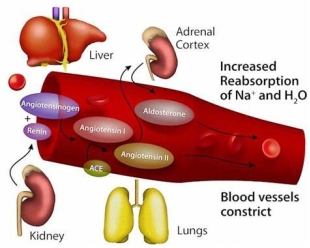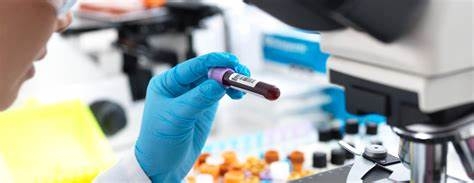Angiotensin-converting enzyme (ACE) is a pivotal component of the renin-angiotensin-aldosterone system and is primarily utilized in the diagnosis of lung diseases. The substrate N-[3-(2-furyl)acryloyl]-L-phenylalanyl-glycyl-glycine (FAPGG) serves as a common substrate for ACE and is offered by Seebio for high-quality use in diagnostic product development.
For more product details, please contact us: service@seebio.cn or Phone: +86 21 58183719 or Wechat: +86 158 0195 7578
ACE Overview
Angiotensin-converting enzyme (ACE) is a dipeptide carboxylic acid-binding glycoprotein containing zinc. It functions as a peptidase and converts angiotensin I into angiotensin II, exerting a blood-raising effect. Angiotensin II further constricts blood vessels and increases blood pressure. ACE also inactivates bradykinin, which has antihypertensive effects, and may stimulate the adrenal cortex to secrete aldosterone. ACE is a crucial regulatory factor in the renin-aldosterone system and bradykinin system. Determining serum ACE activity is commonly employed in the diagnosis and activity assessment of sarcoidosis.

ACE Detection using FAPGG Substrate
Detection Principle: FAPGG undergoes enzymatic conversion by Angiotensin-converting enzyme, generating FAP and GG and resulting in a decrease in absorbance at 340 nm. This decrease in absorbance at 340 nm can be continuously monitored. The activity of ACE can be calculated by measuring the rate of decrease in absorbance of FAPGG at 340 nm. This highly sensitive method is suitable for use in fully automatic biochemical analyzers, making it ideal for routine clinical testing.
Substrate:N-[3-(2-Furyl)acryloyl]-L-phenylalanyl-glycyl-glycine (FAPGG)
CAS:64967-39-1
Molecular formula: C20H21N3O6
Appearance: white or off-white powder
Clinical Significance of ACE Detection
The measurement of Angiotensin-converting enzyme (ACE) in serum holds clinical significance, reflecting the ability of tissue cells to synthesize and release ACE. Dysfunction in cell function can disrupt the dynamic balance of ACE content between tissues and blood, leading to changes in serum ACE levels with consequential clinical diagnostic implications. Serum ACE measurement is primarily employed in the diagnosis of lung diseases and proves valuable in the diagnosis and treatment of various systemic diseases.
Pulmonary Diseases
In cases of sarcoidosis, the majority of patients exhibit elevated serum ACE activity. Internationally, ACE measurement is a routine diagnostic and prognostic tool for conditions such as sarcoidosis epithelioid granuloma and Gaucher's disease. Studies indicate that ACE activity may also increase in other lung diseases, including tuberculosis. Serum ACE levels have been observed to fluctuate to varying degrees during asthma attacks, acute cardiogenic pulmonary edema, chronic obstructive pulmonary disease, spontaneous pneumothorax, pulmonary fibrosis, and adult respiratory distress syndrome.
Other Illnesses
Elevated ACE activity is commonly found in patients with liver disease, with cirrhosis, acute hepatitis, and chronic hepatitis exhibiting varying degrees of elevation, while fatty liver typically shows normal ACE activity.
Patients with hyperthyroidism display higher ACE activity compared to other thyroid diseases, with enzyme activity positively correlating with T3 and T4 levels.
In diabetic patients, serum ACE levels are significantly increased. Changes in serum ACE activity serve as a reference index for diagnosing and assessing coronary heart disease and Keshan disease. The varied patterns of ACE activity across different illnesses highlight its multifaceted role as a diagnostic marker in diverse clinical contexts.
Substrate for ACE detection Product List
|
Item number
|
Product name
|
Use
|
|
EEI0010A
|
FAPGG
N-[3-(2-furyl)acryloyl]-L-phenylalanyl-glycyl-glycine
|
Angiotensin-converting enzyme detection substrate
|


